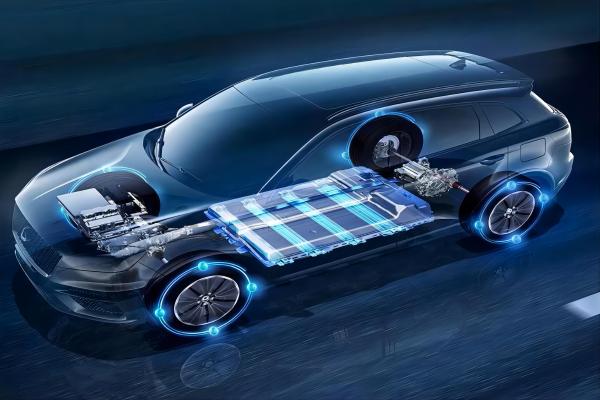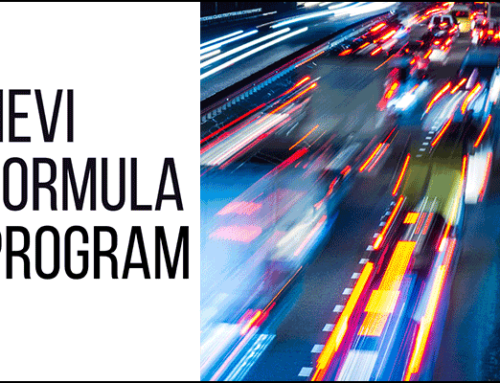The reason why electric vehicles are developing rapidly is that they rely on batteries as their power source. Different from traditional fuel vehicles, pollution-free has become their biggest advantage. As the core of electric vehicles, batteries have naturally become the focus of research and development by global car companies. Today I will tell you about the types of batteries used in electric vehicles.
Classification of batteries Batteries can be broadly divided into three categories: chemical batteries, physical batteries and biological batteries. Among them, chemical batteries and physical batteries have been used in mass-produced electric vehicles, while biological batteries are regarded as future electric vehicle batteries. One of the important directions of development. Chemical batteries are currently the most widely used battery type in the field of electric vehicles, which can be further divided into two categories: storage batteries and fuel cells.
1.Battery: The battery is suitable for pure electric vehicles, including lead-acid batteries, nickel-metal hydride batteries, sodium-sulfur batteries, secondary lithium batteries, air batteries, and ternary lithium batteries.
(1) Lead-acid battery: Lead-acid battery has a history of more than 100 years. It is widely used as a starting power source for internal combustion engine vehicles. It is also a mature battery for electric vehicles. It has good reliability, easy access to raw materials, low price, and basic specific power. It can meet the power requirements of electric vehicles.
(2) Ni-MH battery: advantages, large battery energy reserve, lighter weight, longer service life, and no pollution to the environment. Disadvantages, the manufacturing cost is too high, and the performance is worse than lithium batteries.
(3) Sodium-sulfur battery: The specific energy of the sodium-sulfur battery is high, its theoretical specific energy is 760W.h/kg, and the actual energy is greater than 100W.h/kg, which is 3~4 times that of the lead-acid battery. For power discharge, the discharge current density can generally reach 200~300mA/mm2, and it can release three times its inherent energy in an instant.Another is the high charge and discharge efficiency. Because of the solid electrolyte, there is no self-discharge and side reactions that usually use liquid electrolyte primary batteries, and the charge and discharge current efficiency is almost 100%.
(4)Secondary lithium battery: The lithium ion secondary battery generally includes an electrode assembly, a container for accommodating the electrode assembly, and an electrolytic solution. The electrode assembly includes two electrodes of opposite polarity and a separator. The separator includes a porous membrane containing clusters of ceramic particles.
(5) Air battery: Air battery is a kind of chemical battery. The construction principle is similar to that of a dry battery, except that its oxidant is taken from the oxygen in the air. For example, there is an air battery that uses zinc as the negative electrode, sodium hydroxide as the electrolyte, and the cathode is porous activated carbon, so it can absorb oxygen in the air to replace the oxidant in general dry batteries.
(6) Ternary lithium battery: Advantages. Compared with lithium cobalt oxide batteries, ternary lithium batteries are safer. It is more suitable for the development trend of electric vehicle batteries in the future, suitable for colder weather, and the battery is more stable at low temperatures. Disadvantages, the voltage is too low, and the energy density is between lithium iron phosphate battery and lithium cobalt oxide battery.

2.Fuel cells: dry fuel cell electric vehicles for fuel cells, including alkaline fuel cells, phosphoric acid fuel cells, molten carbonate fuel cells, solid oxide fuel cells, proton exchange membrane fuel cells, and direct methanol fuel cells.
(1) Alkaline fuel cell: also known as bacon fuel cell, is one of the most developed fuel cell technologies. Alkaline fuel cells consume oxygen and pure oxygen to produce drinking water, heat and electricity. They are among the most efficient fuel cells, with the potential to reach 70%.
(2) Phosphoric acid fuel cell: Lithium iron phosphate battery is also a kind of lithium battery, its specific energy is less than half of that of lithium cobalt oxide battery, but its safety is high, the number of cycles can reach 2000 times, and the discharge is stable, becoming the first choice for vehicle power new selection.
(3) Molten carbonate fuel cell: Molten carbonate fuel cell, referred to as MCFC, is a fuel cell composed of a porous ceramic cathode, a porous ceramic electrolyte diaphragm, a porous metal anode, and a metal plate, and its electrolyte is molten carbonic acid Salt.The advantages of MCEC are that the dry working temperature is higher and the reaction speed is faster: the purity requirements of the fuel are relatively low, and the fuel can be reformed in the battery; no precious metal catalyst is required, and the cost is low; liquid electrolyte is used, which is easier to operate.The disadvantage is that it is difficult to manage the liquid electrolyte under high temperature conditions. During long-term operation, corrosion and leakage are serious, which reduces the life of the battery.
(4)Solid Oxide Fuel Cell: Solid Oxide Fuel Cell belongs to the third-generation fuel cell, which is an all-solid-state chemical power generation that directly converts chemical energy stored in fuel and oxidant into electrical energy in an efficient and environmentally friendly manner at medium and high temperatures The device is the one with the highest theoretical energy density among several fuel cells. It is generally considered to be a fuel cell that will be widely used in the future like the proton exchange membrane fuel cell (PEMFC).
(5) Proton exchange membrane fuel cell: The proton exchange membrane fuel cell unit is mainly composed of a membrane electrode, a sealing ring, and a flow field plate with a gas guide channel. The bore electrode is the core part of the proton exchange membrane fuel cell, and the middle is A layer of deep pores, (proton exchange membrane) such.The membrane does not conduct electrons and is an excellent conductor of hydrogen ions. It not only serves as an electrolyte to provide a channel for hydrogen ions, but also serves as a diaphragm to isolate the two polar reaction gases.On both sides of the membrane are gas electrodes, composed of carbon paper and catalyst, the anode is a hydrogen electrode, and the cathode is an oxygen electrode. Flow field plates are usually made of graphite. Proton exchange membrane fuel cells use oxygen as fuel. Multiple battery cells can be connected or connected in parallel according to the needs to form battery packs with different power
(6) Direct Methanol Fuel Cell: Direct Methanol Fuel Cell or DMFC is a subcategory of Proton Exchange Fuel Cell in which methanol is used as fuel. Their main advantage is the ease of transporting methanol, an energy-dense but fairly stable liquid under all environmental conditions.The thermodynamic theoretical energy conversion efficiency of DMFC is 97%; the energy conversion efficiency of currently achievable operable batteries reaches 30%-40%. Promising approaches to improve operational efficiency are intensively studied, in the assumed methanol economy, more efficient direct fuelBatteries will play a key role in the theoretical use of methanol as a general energy transport medium.














